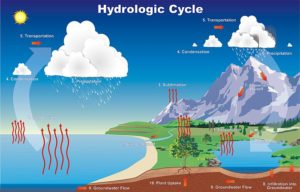New Sustainable Groundwater Regulations

California’s Sustainable Groundwater Management Act Regulations Issued

California’s Sustainable Groundwater Management Act (“SGMA”) was passed in 2014. The SGMA requires local agencies to bear the burden of creating, implementing, and enforcing Groundwater Sustainability Plans (“GSP”) in certain groundwater basins to manage the aquifer in a “sustainable” manner. The California Department of Water Resources (“CDWR”) recently issued regulations that help clarify the requirements of the GSPs, but also include some information about how the law will impact local agencies and groundwater users in the State. However, the regulations fail to satisfy some fundamental questions raised by the SGMA.
The new regulations were issued on May 18, 2016 by CDWR provide some insights into how the agency plans to implement the Sustainable Groundwater Management Act. A copy of the regulations may be found at: http://water.ca.gov/groundwater/sgm/pdfs/Proposed_GSP_Regs_2016_05_10.pdf. Under the regulations, the agency set out the requirements for plan contents, including administrative information, a description of the basin, sustainable management criteria, a description of the monitoring network, and projects associated with the plans.
The administrative information section must include general information about the region, description of the local agency developing the plan, and the agency decision-making process with public engagement.
The basin setting section must thoroughly describe the basin’s hydro-geologic conditions and must create a “water budget” that describes all the surface and groundwater movement into and out of the basin. Under this section, the local agency must estimate the “sustainable yield” of the basin.
Sustainable Management Criteria have also been outlined by the regulations. These criteria require local agencies to set a sustainability goal that eliminates undesirable results of groundwater use within 20 years of the statutory deadline. CDWR will evaluate sustainability goals based on the achievement of minimum thresholds established by the local agency. The minimum thresholds expand on the statutory language for “undesirable results.” For example, a significant and unreasonable reduction in groundwater storage levels will be evaluated based on the locally defined “undesirable results,” supported by the “sustainable yield” of the basin. The local agency must also include a measuring system and “measurable objectives” that are revisited every five years.
The regulation also outlines the procedure that CDWR will use to evaluate plans, timelines for approval and reporting, and how local agencies can amend their plans. It also sets out the procedure for interagency agreements and addresses adjudications and alternatives to GSPs.
The real impact will come from the local agencies’ interpretation of the word “sustainable.” The new regulations use the term throughout, defining the quantity of water in the water budget available and defining allowable groundwater depletions. Traditionally, sustainable yield is considered the amount of water that can be withdrawn in balance with recharge. At first glance, the definition makes sense. The meaning, however, simplifies a more complex concept. When water is pumped from an aquifer, three results can occur: a reduction in stored water stored in the aquifer, capture of surface water (like rain or seepage from a river), or a reduction in discharge (like a spring or river baseflow), or any of these effects in combination depending on the specific aquifer. Ponce, Victor M., Sustainable Yield of Groundwater, (available at: http://ponce.sdsu.edu/groundwater_sustainable_yield.html). It remains to be seen how “unreasonable” and how “significant” the undesirable effects have to be in order to become unsustainable.
Make sure to stay tuned to Schroeder Law Offices’ Water Blog for more news that may affect you!
This article was drafted with the assistance of Law Clerk Jakob Wiley, a concurrent student at Oregon State University’s Water Resources Policy and Management graduate program and a law student at the University of Oregon School of Law.